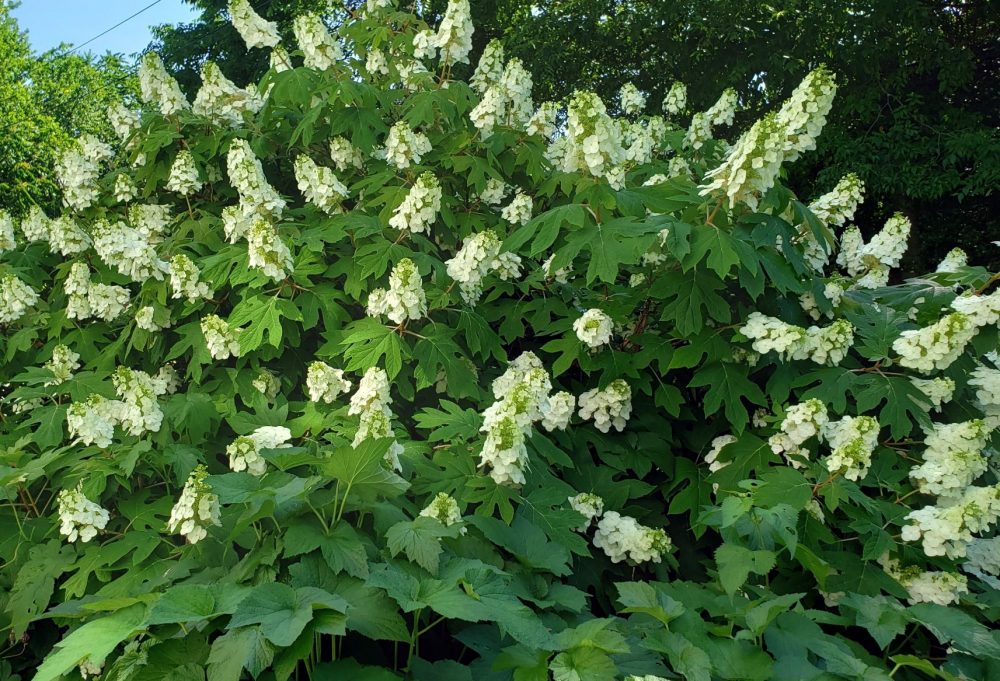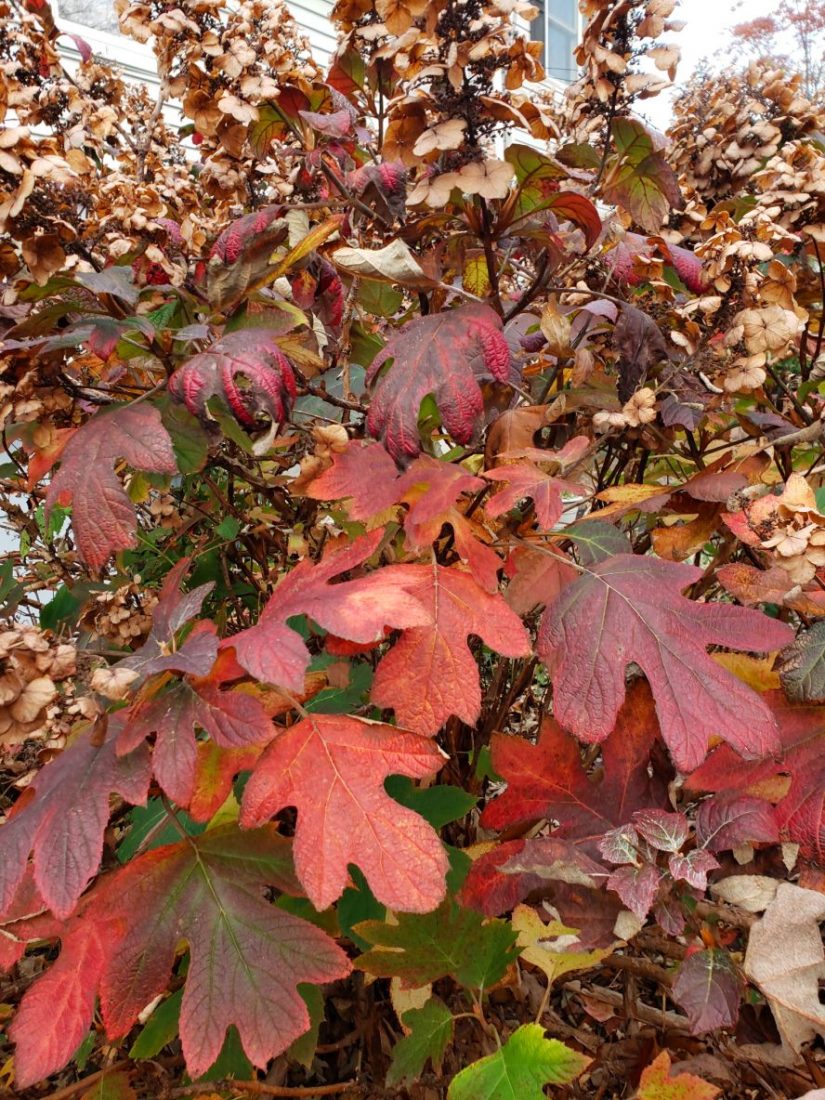Imagine a large shrub beautifying the landscape for three seasons while requiring little maintenance and covering a large area, keeping it weed-free. Hydrangeas are popular garden shrubs beloved by gardeners. Unfortunately, the one most often grown—the mophead or French hydrangea (Hydrangea macrophylla)—often causes gardeners heartaches when it fails to bloom because its buds succumb to late frosts. Gardeners can not only avoid losing a year of blooms, but can also enjoy three seasons of beauty by using oakleaf hydrangeas (Hydrangea quercifolia) instead. Although they are native to the southeastern US, not the northeast, they are cold hardy in New Jersey (their buds don’t suffer from late frosts), and they support our pollinators.

The show of Oakleaf hydrangeas begins in the spring with large, attractive leaves similar to those of oaks—hence their name. They begin blooming in early June with gorgeous, dramatic, large panicles that catch attention from a distance. Just one of these shrubs brightens an area. Not only are the flowers beautiful, they’re also lightly fragrant and favorites of pollinators, especially bees. The show isn’t over when the blooms stop. The flower panicles will change from white to pink and eventually dry on the shrub. This hydrangea has excellent fall color as its leaves transition from oranges to reds.
Oakleaf hydrangeas grow six feet tall and wide, sometimes reaching eight feet in height, and are very low maintenance. Other than removing dead branches, they require no pruning, making it as low maintenance as a plant can be. They shade the ground beneath them, so very little weeding is needed. Although this plant is most attractive in spring, summer and fall, its exfoliating cinnamon-colored bark adds interest to the garden even in winter.
Reduce your maintenance routines by growing Oakleaf hydrangeas, and they will reward you with beauty throughout the seasons.
For more information on native plants visit Native Plant Channel on Youtube.

